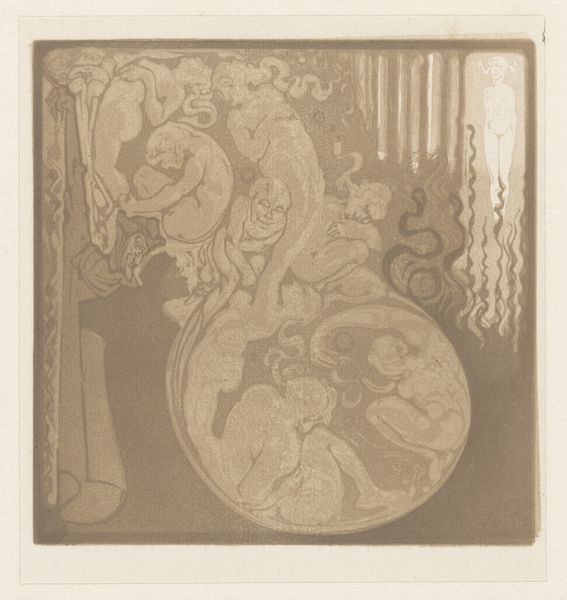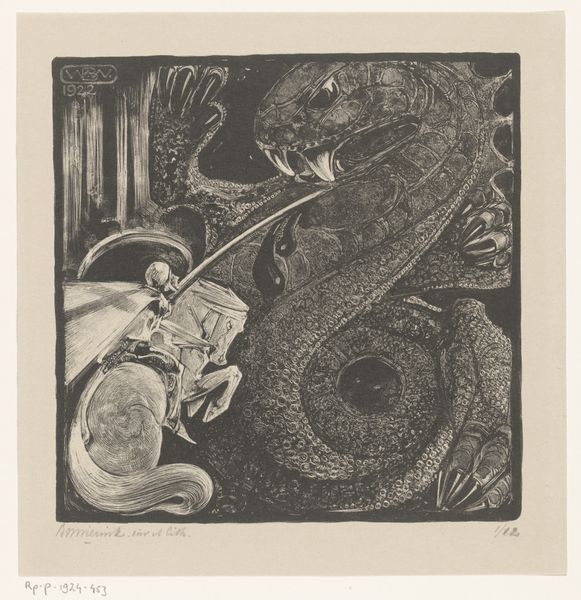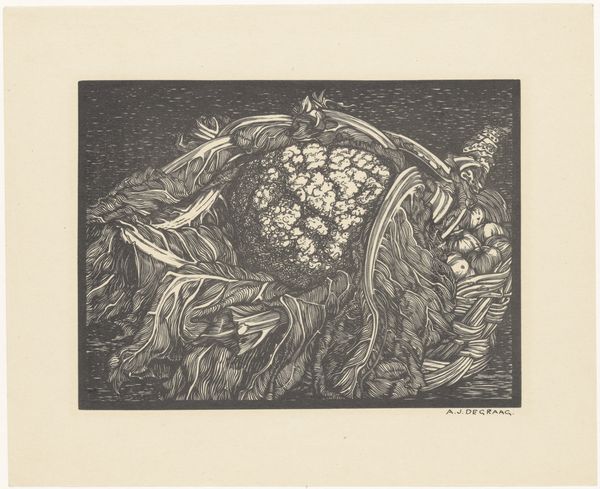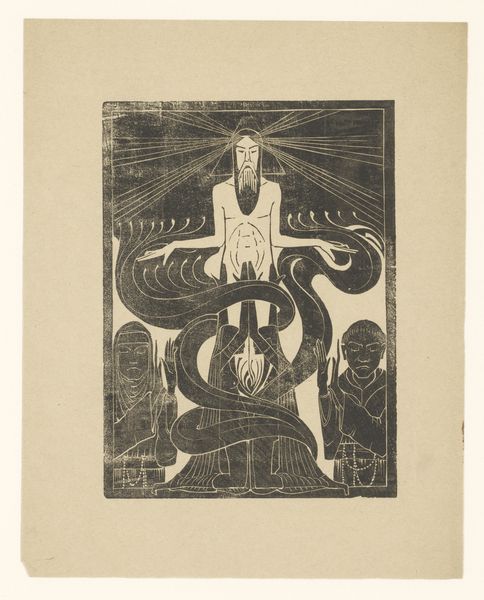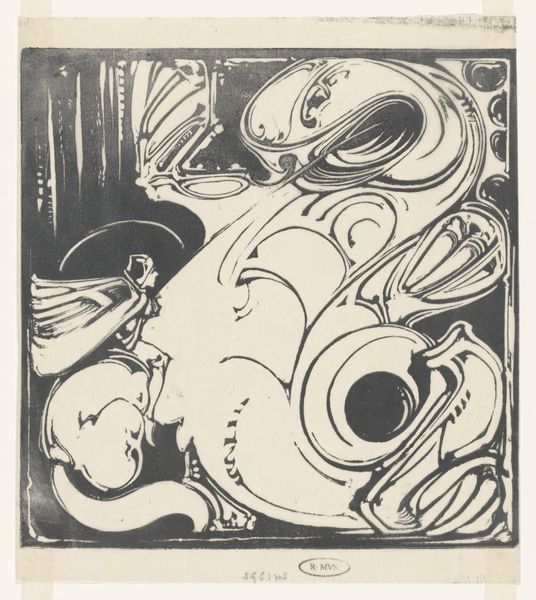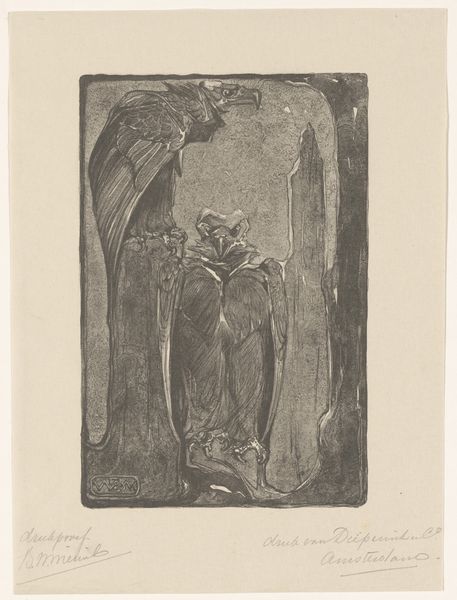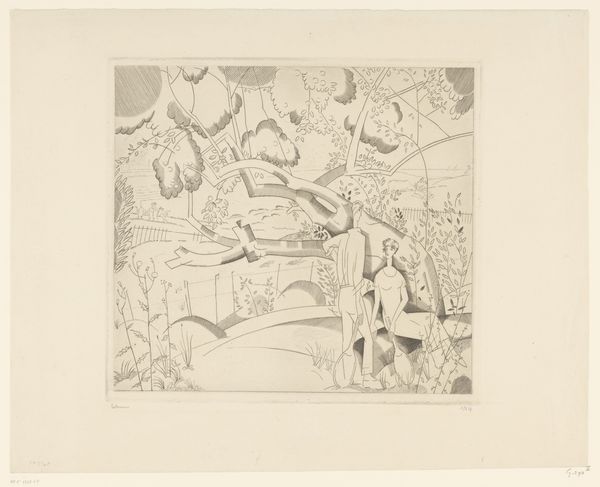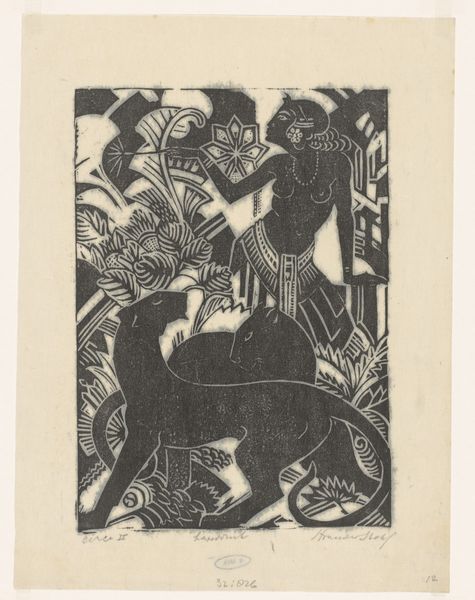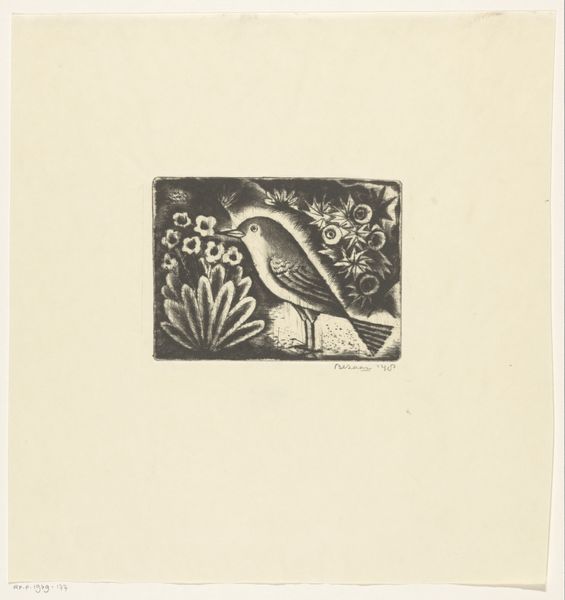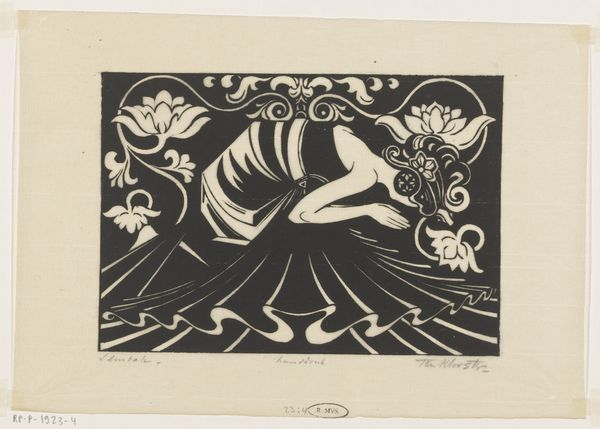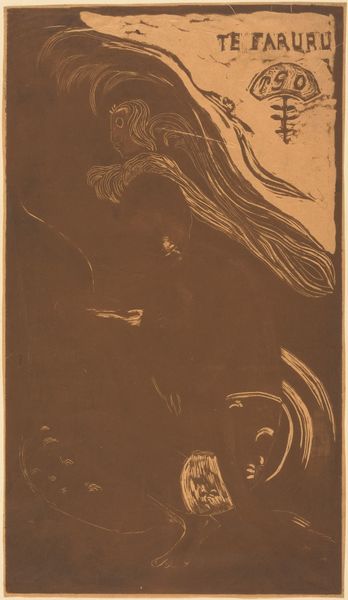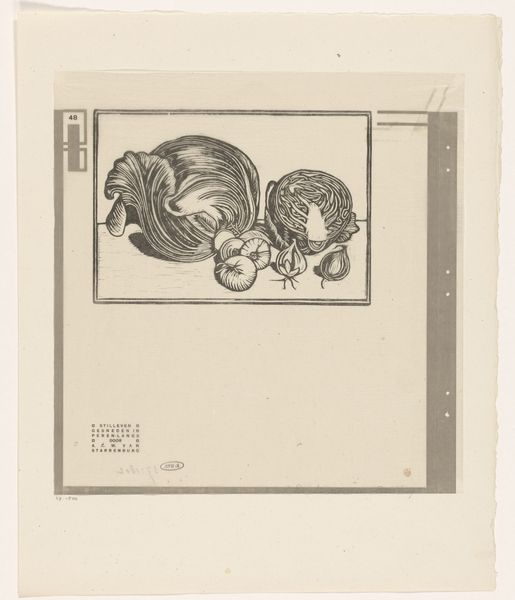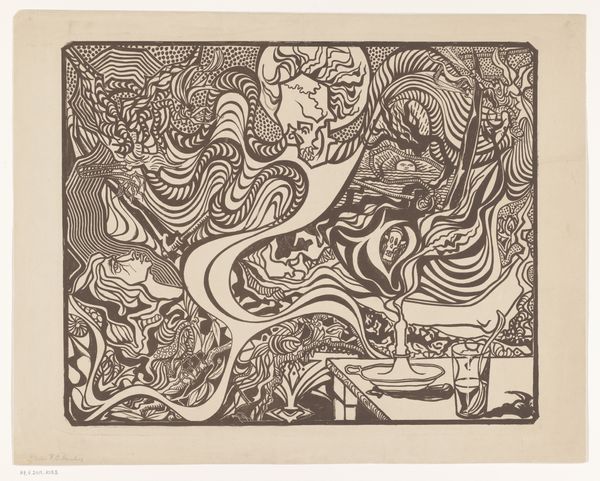
Dimensions: height 246 mm, width 231 mm
Copyright: Rijks Museum: Open Domain
Editor: Here we have "St. Joris," a woodcut made between 1920 and 1923 by Bernard Willem Wierink. The tones give it a heavy, almost somber feel. What cultural currents do you see swirling around in this piece? Curator: That's a keen observation. The weightiness connects directly to the social climate of the early 20th century. Can you sense a bit of a shadow there? After World War I, traditional heroic narratives were often interrogated, sometimes satirized. Wierink uses the familiar St. George slaying the dragon, a symbol of good conquering evil, but complicates it. Editor: How so? The dragon seems... almost stylized. Not very fearsome. Curator: Exactly! Is Wierink perhaps questioning the straightforwardness of that good-versus-evil narrative? Consider the dragon’s exaggerated, almost cartoonish features and the angular lines. How do they relate to anxieties about industrialization and societal change? The composition might be commenting on how older stories and frameworks no longer apply to the rapidly changing world, and how harmful structures change over time. What kind of violence are the artist referencing, or making invisible here? Editor: I see your point. The lines are far from soft. There's something unsettling in this seemingly straightforward historical scene. Curator: Right. And thinking about the use of woodcut itself: a traditional, almost archaic medium during the interwar period. How might that relate to ideas of national identity, of a longing for simpler times in the face of intense disruption, yet through this disruptive scene? What do you think? Editor: It’s definitely given me a new lens for viewing art that uses older stories; it is less about the story itself, and more about what anxieties were in the artist's society at that moment. Curator: Precisely. Art invites us to engage in these complex dialogues between the past and the present, the personal and the political, allowing us to constantly re-evaluate how these historical narratives impact our own cultural landscape.
Comments
No comments
Be the first to comment and join the conversation on the ultimate creative platform.
